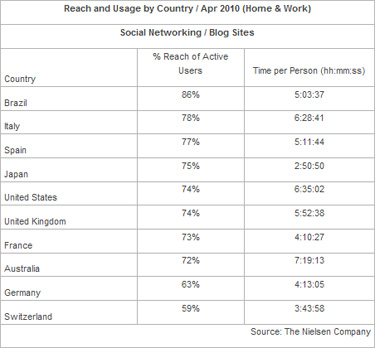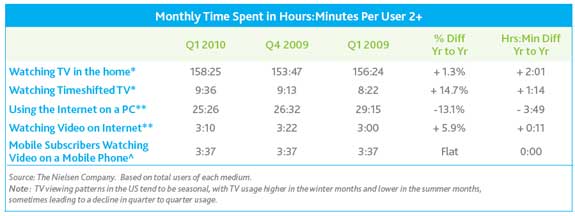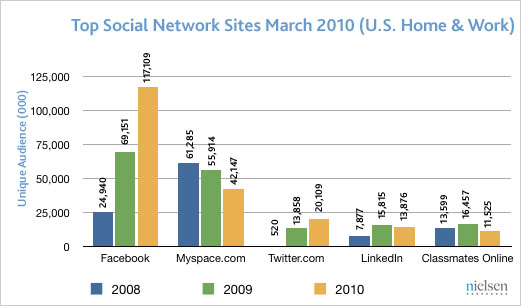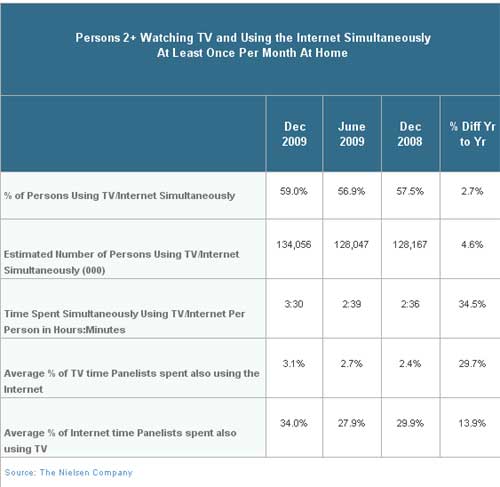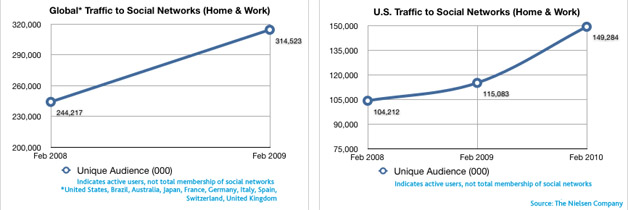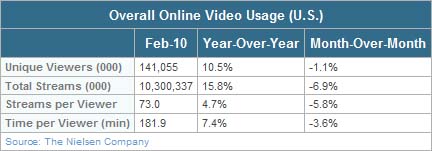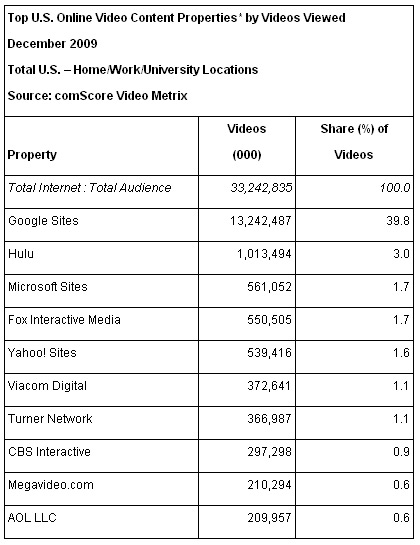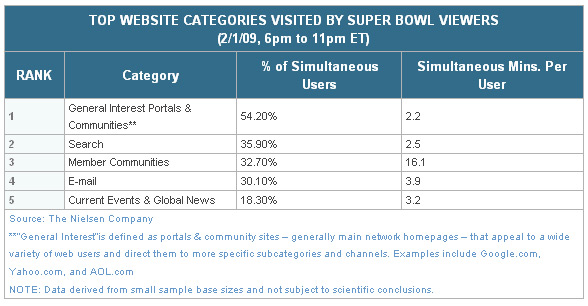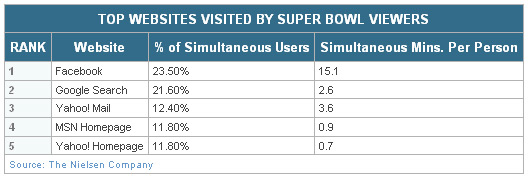In case you were wondering, Facebook is pretty popular. Google is of course the undisputed king of search market share, but Facebook has the edge in some areas. Social media is the obvious area. While Google is hoping to make some serious headway here with Buzz, Facebook is far and away the dominant being in the world of social networks.
Compete shared some data with us that emphasizes just how big Facebook is, and just how seriously it should be taken. If these stats from Facebook weren’t enough for you, Compete points out that Facebook has surpassed Yahoo as the #2 site online in the U.S. in terms of unique visitors, just under Google.

In December, according to Compete, Facebook’s unique visitors in the U.S. had increased by over 121%. That’s pretty incredible, because I seem to recall Facebook being pretty popular in late 2008 too.
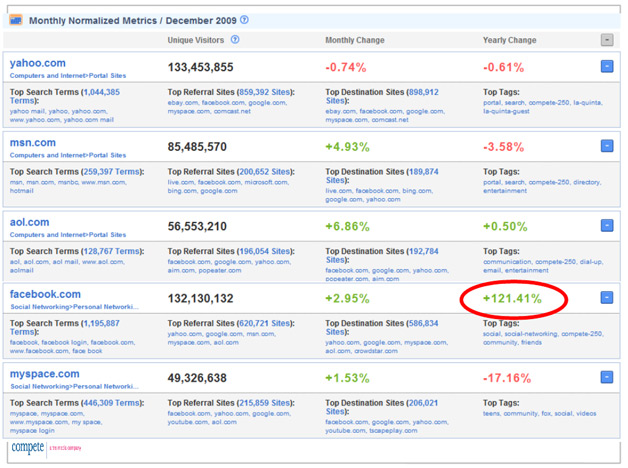
In terms of social media sites, none of the others even come close in the U.S. – not even the world’s second largest search engine, YouTube:

So Facebook is already bigger than the second largest search engine. Add to that, the fact that search on Facebook itself is rising. According to comScore, Facebook’s search query percentage increased by 13% from December to January, growing to 395 million searches:
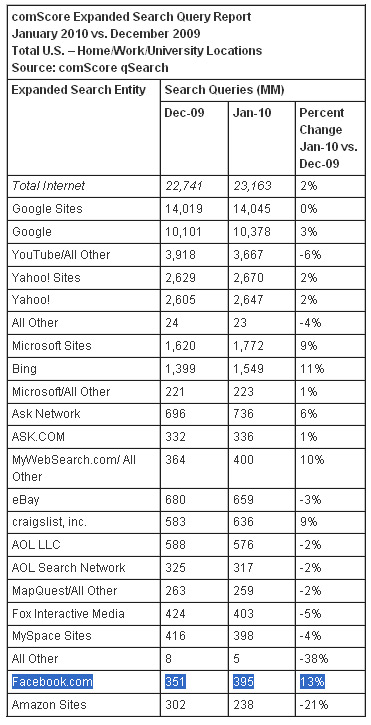
Greg Sterling notes, the numbers in the chart "are likely internal searches on Facebook for content or friends, rather than web search. This is not the same thing as people conducting searches on Google, Yahoo or Bing more generally. And 13 percent growth is certainly strong, but not "phenomenal.’"
Facebook’s search feature, which has been emphasized somewhat with the latest redesign, lets users search people, pages, groups, apps, events, posts by friends, posts by everyone, OR web results. Sterling makes the case that internal Facebook searches are different from web searches one would perform on Google, but in some ways, Facebook search simply goes places that Google doesn’t (while also going Places that Google does via the Bing-powered web search).
Facebook is almost like its own web in some ways, and that is becoming truer all the time as Facebook gets more of users’ time spent online (which it is doing through status updates, news, apps/games, videos, music, events, and possibly email in the future…we also suggest Facebook consider adding blogging to the mix).
Look at this newly released data from Nielsen about time spent online. In January (in the U.S.), Facebook users averaged 7 hours a month on the site. As a point of comparison, Google users spent about 2 hours.
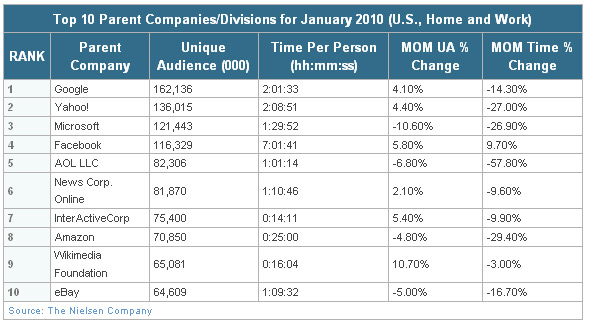
In some ways, that doesn’t really take anything away from Google, because Google’s job as a search engine is to get you where you need to be to find what you’re looking for. However, Facebook users appear to be finding plenty of stuff they are looking for along with stuff they didn’t know they were looking for, as well as just hanging out and being entertained. With Facebook’s search feature, they’re able to find what they’re looking for without having to leave Facebook until the search result (at least theoretically).
Whether you think Facebook’s search growth is "phenomenal" or not, you can’t overlook the fact that more people are using the search feature, and some unknown percentage of that is pulling from Bing. Maybe this should be construed as a good reason not to overlook your Bing SEO efforts. Maybe it’s also another reason why Facebook should be viewed as one of Google’s key competitors (along with Microsoft, Yahoo, and increasingly Apple). Actually, Sterling points out that Google recently listed Facebook officially as a competitor for the first time in its annual 10K filing.
Google is seemingly going after the market that Facebook dominates with the launch of Google Buzz, but status updates are just part of the big picture. Search is just part of the big picture. It’s all about getting the user’s attention, is it not? Here are some tips for running a good Facebook page.
What do you think? Discuss here.
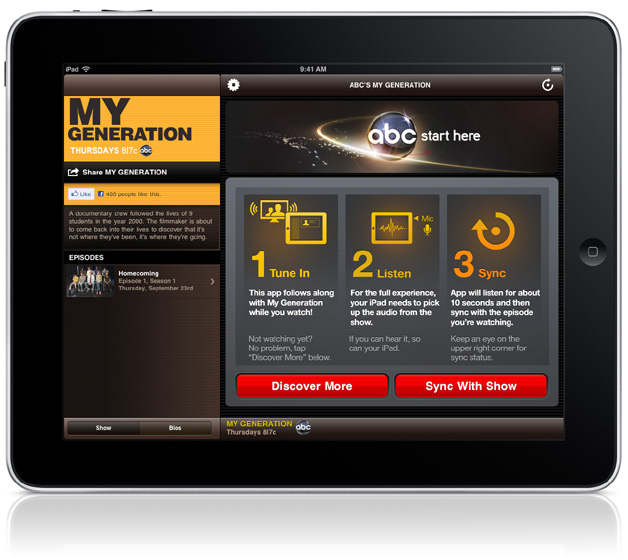





 Television: is a universally important platform for video consumption, with connected consumers in many markets spending 4+ hours per day watching television.
Television: is a universally important platform for video consumption, with connected consumers in many markets spending 4+ hours per day watching television.

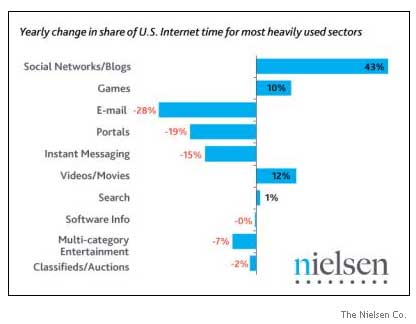

 Here’s a little bit of historical info in case past stats don’t come straight to mind: ever since Microsoft and Yahoo first announced their partnership, there’s been a fairly steady tradeoff in market share between them. Which is a bad thing from both companies’ perspectives, since it implies Microsoft’s paying for technology it doesn’t need.
Here’s a little bit of historical info in case past stats don’t come straight to mind: ever since Microsoft and Yahoo first announced their partnership, there’s been a fairly steady tradeoff in market share between them. Which is a bad thing from both companies’ perspectives, since it implies Microsoft’s paying for technology it doesn’t need. So now Yahoo and Bing are a tiny bit closer to Google (with its market share of 65.1 percent), and have put more distance between them and fourth-place AOL. (AOL was in fact the big loser in May, getting left with a market share of 2.1 percent after seeing its standing drop 0.4 percent.)
So now Yahoo and Bing are a tiny bit closer to Google (with its market share of 65.1 percent), and have put more distance between them and fourth-place AOL. (AOL was in fact the big loser in May, getting left with a market share of 2.1 percent after seeing its standing drop 0.4 percent.)